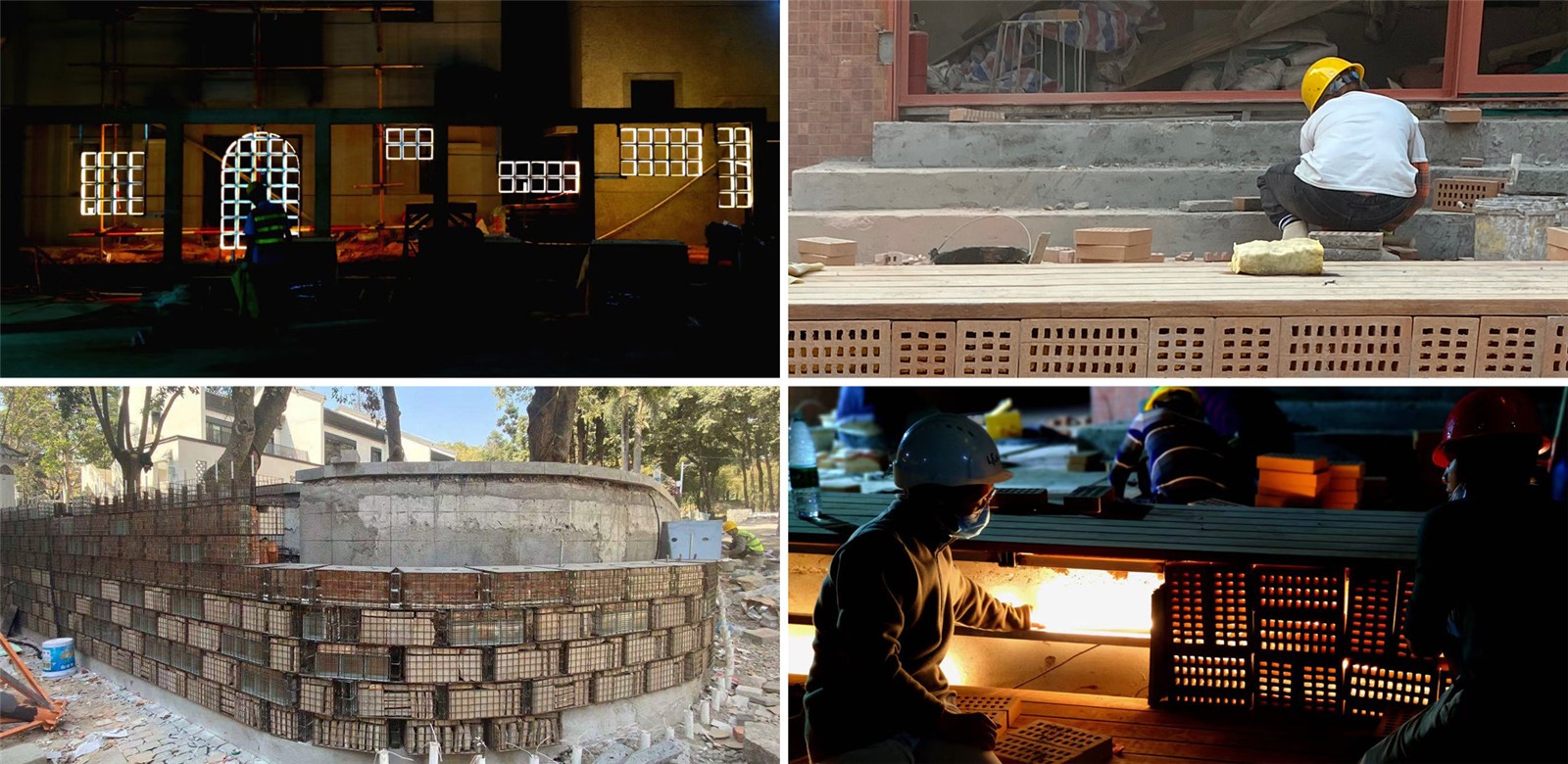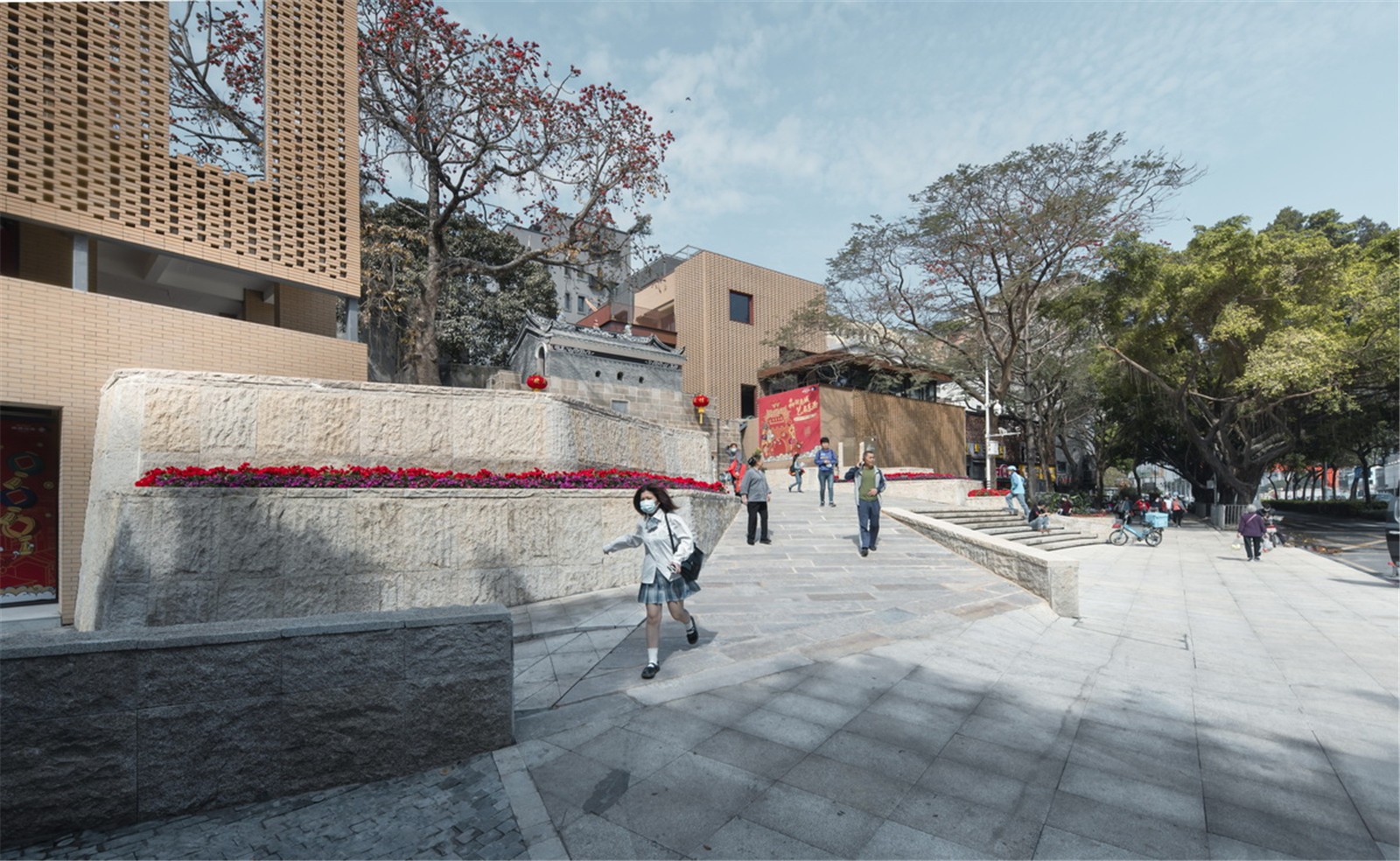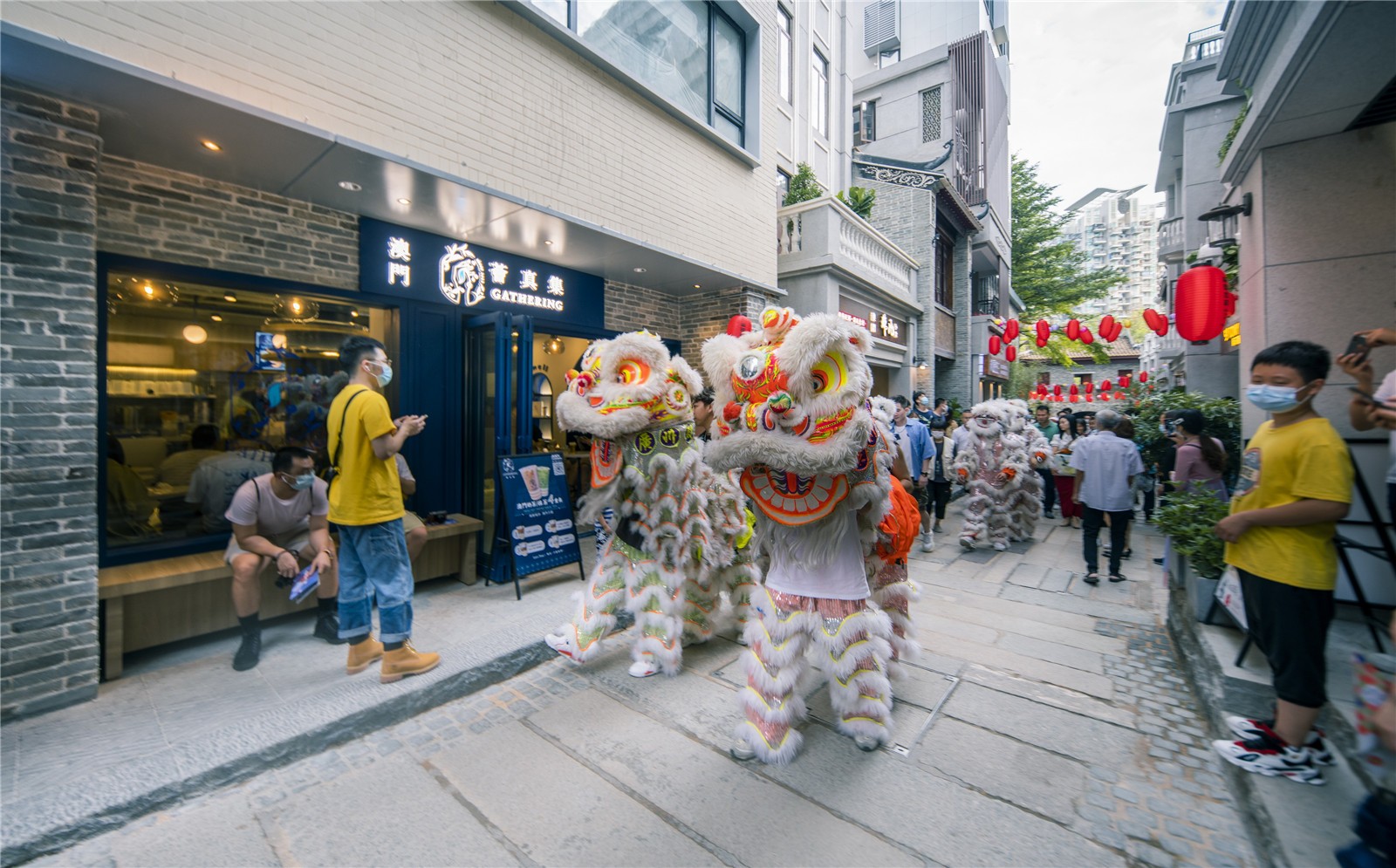地址:北京市海淀區(qū)中關村北大街100號(北樓)北京大學建筑與景觀設計學院一層 Email:info@landscape.cn
Copyright ? 2013-2022 景觀中國(www.36byz.com)版權所有 京ICP備05068035號
 京公海網(wǎng)安備 110108000058號
京公海網(wǎng)安備 110108000058號
南頭古城位于深圳經(jīng)濟特區(qū)的南山區(qū),距今有近1700年的歷史,見證了深圳中心區(qū)域的更新與發(fā)展。隨著深圳的快速城市化和人口的不斷遷入,南頭古城迅速形成了城市中有村落,村落里有古城的復雜格局。作為古城,它曾經(jīng)是“粵東首郡”,是深圳歷史文化的寶貴遺存。建國初期,作為政府所在地,古城一直在深圳處于區(qū)域核心地位。
Nantou Ancient City (hereafter as: Nantou) is located in Nanshan District,Shenzhen. With a history of nearly 1700 years, it has witnessed the renewal anddevelopment of the historical city center in Shenzhen. Nantou is now aquickly developing urban village within the rapid urbanization and continuousimmigrations, but it has a complicated out-of–date urban spacestructure. As an ancient historical site, it used to be the "first countyin eastern Guangdong". It is really a valuable relic of local culturalhistory. In the 1950s, Nantou, as the seat of local government, was the corearea in Shenzhen.

隨著深圳城市規(guī)模越來越大,蓬勃發(fā)展的商品房市場和日益高漲的租賃需求,刺激了城中村的野蠻生長。作為城中村,南頭是生活成本最低廉,最具人情味的生活區(qū)域。現(xiàn)今,南頭古城作為歷史古城和當代城中村的“共生體”,存在的人口和空間結構復雜、基礎設施陳舊、文物保護困難、公共空間缺乏等問題,為該片區(qū)更新與改造帶來了巨大挑戰(zhàn)。
Through the rapid development recent decades, this urbanvillage has been favored and unreasonably developed by the booming commercialhousing market and increasing house rental demand for its lowest living costand most friendly human-oriented living ambience. However, it was a greatchallenge to renovate this ancient urban village for its complicated populationand spatial structure, outdated infrastructure, difficulties of cultural relicprotection, and lack of public space.

古城的原住人口約3萬人,其中90%為流動人口,大多為低收入人群。南頭的周邊地塊高樓聳立,相比之下, 南頭古城的租金便宜超六成,成為了城市里低收入人群的無可替代的安身之所。與此同時,古城內部的建筑風格迥異、空間復雜。無論是從尊重歷史,還是尊重城市發(fā)展的角度,城中村中的人和建筑都值得擁有更多的包容。
The aboriginal population is about 30,000 in Nantou, of which 90% arelow-income migrants. Compared with surrounding high-rise housing blocks, Nantouis absolutely an irreplaceable shelter for low-income migrants with its over60% cheaper house rental. Moreover, this ancient site is filled with differentarchitectural styles with inclusive space layout. Both the architectures andlifestyles here are needed to be respect whether from historical factors orurban development.

設計通過文化展示、歷史軸線、活化建筑的手法,有機串聯(lián)了點線面不同的片區(qū),編織多元包容的社區(qū)空間。設計注重原住民和外來人口、創(chuàng)客、游客等人群之間的積極互動,引入了文化空間、科創(chuàng)空間和文創(chuàng)空間的活化模式。將這些空間和社區(qū)人群融合起來,并植入具有古城特色的元素,有著耐人尋味的溫馨與關懷。以此作為一種城市更新模式,豐富古城內原有的空間和人口結構,加強片區(qū)的在地文化吸引力,進而實現(xiàn)多元包容的社區(qū)復興。
The project design well connects different areas fromdifferent viewing angles in a systematic way to build a diversified andinclusive community space by culture display, historic-axis connection andarchitecture revitalization. An activation mode was introduced to designcultural space, scientific innovation space and cultural innovation space, soas to achieve the active interaction between aborigines and immigrants, makers,tourists and other groups. Some tender feeling is spreading in this urban village when people are enjoying themselves in thesesocial spaces integrated with local ancient features. It establishes a model ofurban renewal to obtain the variety for existed monotonous structures of spaceand population here, and to enhance local cultural attraction, further to buildan inclusive livable community with vitality and diversity.
面對南頭復雜的人口結構和空間體系,設計團隊針對南頭主街的改造,決定采取劃分區(qū)域、分類解決的改造思路,對街區(qū)進行分段控制和分級改造。以店鋪前的高地的界限作為劃分公私的界面,針對“有空地””無空地““僅有臺階”“共用鋪前空間”的幾種情況分類提出不同的設計策略。將臺階改造成組合座椅,搭配統(tǒng)一花箱形成街道兩側有活力有生命的彈性空間。
Considering the complicated population structure and spatial system inNantou, its main street was renovated segment by segment and stage by stagewith clear classifications. The boundary between public and private spaces wasdivided by the steps in front of the shops on the street. The shop facades werestrategically renovated according to the classified "with vacantland", "without vacant land", "only with steps", and"with shared front space". The existed step space in front of eachshop was renovated as series seating areas for the passersby, and decoratedwith unified flower boxes to create a resilient streetscape full of vibrancy.


主街公共區(qū)域的設計根據(jù)街巷等級,選用風格統(tǒng)一的鋪裝以實現(xiàn)空間劃分。另外,對于極具特色的保護建筑,設計團隊結合建筑特點搭配植物軟裝,并預留彈性的活動空間。
The design of public areas was based on the grading of the main street and itslanes. Two paving materials with separate unified styles were selected for thestreet and lanes, so as to visually achieve clear spatial division. Inaddition, the historic buildings withdistinctive local features were well preserved and decorated byenergetic plants in a considerate way, also the flexibly functional space foractivities was reserved.


南頭古城不僅僅是人口密集、空間復雜的城中村,還是擁有悠久歷史文化的古城。為延續(xù)古城文化活力,設計使用了具有上百年歷史的報德祠等古建筑剩余材料。古城靠近中山公園的入口設計將這些舊材料加以回收,加入透光混凝土等新材料,形成了新的肌理自然、富有歷史感的入口景墻。
Nantou is not only a densely populated urban village with complicated spacesystem, but also an ancient cultural site with a long history. In order tobetter preserve and keep on local cultural vitality, the projectdesign used the remaining materials of ancient buildings which had ahundred years such as Baode Temple building stuff. The ancient city entrancewhich is close to Zhongshan Park was designed to recycle these primordialmaterials. By combing with modern materials such astransparent concrete, a new natural and historical entrance landscape wall wasdexterously formed.


古城街巷的更新以嶺南廣府建筑風格為基調,鋪裝材料也主要應用回收的原有石料,通過控制新舊材料、元素的選擇與應用比例,營造了古今交融的文化場景。
Based on local Ling-nan Cantonese architectural style,the main street and its lanes are mainly paved by recycled local stones aswell. Modern and historical materials and design elements are reasonablyapplied on this ancient site as if a dialogue on culture were being vividlyperformed through time and space.


南頭古城主街的改造還存在基礎設施的提升的關鍵問題。事實上,主街是一個南北朝向的斜坡,布滿了高低不一的井蓋和混亂的電線和管道。為了平衡主街與建筑入口的高差,設計利用臺階組合座椅為居民提供休息空間,并將原有的管線藏入其中。設計合理地規(guī)劃落實了主街的分類垃圾投放點和成品箱式的消防站點。
Infrastructure improvement is another key issue in this project. Actually,the main street was a north-south ramp with manhole covers of varying heightsand disordered wires and pipes. The renovated seating areas in front of theshops are also functioned to balance the height difference between the mainstreet and the entrances of buildings along the street, meanwhile, to hide theexisted disordered wires and pipes, creating a pleasant streetscape forvisitors and passersby. Classified trash cans and box-type outdoor firehydrants are reasonably set on the street.


主街巷的排水是應用橫向線性截水溝和帶有古城元素的金屬排水口來解決。植物的種植設計根據(jù)現(xiàn)場高差所能提供的覆土厚度,分為了盆栽、種植池等形式。這些舉措不僅保障了古城居民現(xiàn)代的生活需求,還極大改善了古城內的空間環(huán)境質量。
Horizontal linear interceptorditches are installed with ancient-style metal drainage outlets to solve thedrainage problem on the whole site. The plant palette is designed with plantingpots and beds according to the thickness of soil cover by the site heightdifference. These designing measures not only meet the residents’ needs ofcontemporary daily life, but also greatly improve the quality of spaceenvironment on the whole site.


除了主街改造和歷史古跡保護,我們還通過調研當?shù)鼐用竦男袨槟J胶蜕罘绞剑l(fā)現(xiàn)城內的公共空間有限,無法滿足他們的使用需求。因此,設計對公共開放空間通過可持續(xù)、低干預的綜合改造手段來恢復古城生活。
Through the investigation on local residents’ behavior patterns andlifestyles, designers found there were limited public spaces to meet theireveryday needs here. Whereupon, in addition to the reconstruction of mainstreet and the reparative protection of historic monuments, the existed important public open spaces were allrenovated in a sustainable way with low interventions, such as SouthSquareEast Gatehouse, Guanye Temple, Baode Temple, etc.. Moreover, greeninfrastructure is pleasantly set on these public spaces to create a comfortableand cozy greenbelt for residents, endowing the ancient site with full ofvitality.



設計改造了南門廣場、東城門、關爺廟、報德祠等關鍵場地,并增加基礎設施使其成為一個舒適愜意的綠地。其中,南門廣場將原有冗余的灌木清除,改建成了開闊的綠地空間。保留了原有的大榕樹、散置石,使之成為具有場所記憶的空間。
In detail, the existing redundant shrubs on South Square are removedto build an open green space, and the large banyan and scattered stones arepreserved to keep an ambience of reminiscence. Traditional scenes of everydaylife, such as enjoying opera-and-tea time, dragon-lion dancing performance andtrading fairs, all return here for local residents by the renovation of publicspaces.



公共空間的改造不僅重現(xiàn)了聽戲喝茶、舞龍舞獅、居民市集等古城傳統(tǒng)的生活場景,還提供了展覽、演藝、創(chuàng)意集市等多樣化平臺。至此,改造后公共空間不僅滿足了多樣化的活動需求,還充滿古城原有的生活氣息。
The renovated spaces also provide diverse platforms for variousactivities like exhibitions, artistic performances and creativity fairs. As aresult, the renovation provides Nantou and her residents with ample space fordiverse activities, and return local original life style to residents.



南頭古城的更新聚焦于古跡維護和城中村改造,引入了傳統(tǒng)手工藝、美食、民俗、創(chuàng)意市集、博物館群和主題展覽等各類活動。南頭古城作為深圳的文化發(fā)源地,成為了一個讓人享受和珍惜的城市地標性場所。它從原來低端的城中村,變成集聚文創(chuàng)、居住、商業(yè)的城市共生生態(tài)圈。古城內的人們既保持原有的生活常態(tài),也能在寬敞的公共空間開展活動。
The project laid emphasis on the maintenance of historical sites and therenovation of this urban village, introducing various design elements for localactivities such as traditional handicrafts, food, folk customs, creativityfairs, museum groups and themed exhibitions. As the birthplace of local culturein Shenzhen, Nantou becomes a landmark for people to appreciate and cherish itshistorical and cultural heritage. Through the renovations, it has successfullytransformed from a low-end urban village into an urban symbiotic ecosystem withintegrated cultural creativity, residence and commerce. Local residents stillkeep their original normal lifestyle, but they could now enjoydiverseactivities in the more spacious public spaces.



同時,古城既為新加入的人群提供了文化、創(chuàng)意的活動平臺,也低收入群體在地價日益昂貴的城市里提供了優(yōu)質、低價的生存空間。然而,城中村的改造更新是一個復雜持續(xù)的過程。未來,南頭古城會在復雜現(xiàn)代城市背景中探索出自己的可持續(xù)模式,帶動周邊地區(qū)的協(xié)同發(fā)展,以期為世界范圍內其他城市的更新提供了可行性的解決策略。
Meanwhile, the renewed NantouAncient City provides not only an ideal cultural and creative activity platformfor newcomers, but also a high-quality livable space with low rent forlow-income groups surviving in the metropolis with increasingly expensive landprices. Nevertheless, the renewal of urban villages is a complex and continuousprocess, while this project is just a beginning. In the future, Nantou willexplore a sustainable development mode itself in the complex modern citybackground, to lead the coordinated development with surrounding areas, with aview to providing feasible solutions for the urban-village renewal of othercities around the world.

項目名稱:南頭古城活化與利用項目
項目地址:深圳市南山區(qū)南頭古城
建筑面積:9,500㎡
客戶名稱:深圳市南山區(qū)建筑工務署
代建方:深圳市萬科發(fā)展有限公司
項目規(guī)劃及設計管理團隊:萬科城市研究院 萬路設計
設計總包:深圳市博萬建筑設計事務所(普通合伙)
景觀設計: 奧雅設計
設計團隊:奧雅深圳公司項目三組、植物組 / 奧雅深圳公司公建三組
燈光設計:大觀國際設計咨詢有限公司
幕墻設計:深圳市朋格幕墻設計咨詢有限公司
標識設計:深圳市上行線設計有限公司
集群設計其他單位:MVRDV/Tao跡/大域/ 都市實踐/ 反正 /坊城 /非常建筑/華匯/集合設計/厘米制造/
南沙原創(chuàng)/ 南粵古建/如恩/Plus 8/ 豎梁社/武重義/一十一/營加/眾建筑 /梓集/(排名不分先后)
設計時間:2020.09
竣工時間:2021.02
攝影師:ACF域圖視覺 林濤 韋立偉 上官靜煊
版權聲明:本文版權歸原作者所有,請勿以景觀中國編輯版本轉載。如有侵犯您的權益請及時聯(lián)系,我們將第一時間刪除。
投稿郵箱:info@landscape.cn
項目咨詢:18510568018(微信同號)
 廣東深圳
廣東深圳
 www.aoya-hk.com
www.aoya-hk.com
 sz@aoya-hk.com
sz@aoya-hk.com
